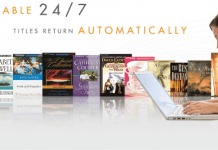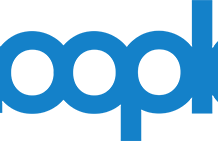
1. Primary Research has just released the 2011 edition of their Library Use of eBooks report.
The complete report is a fee-based document but the news release does include some findings.
+ The libraries sampled had a mean number of 3.51 contracts with individual publishers or aggregators.
+ For colleges, eBook aggregators represented more than 63% of their total eBook contracts.
+ Larger libraries were much more likely than smaller ones to make purchases of eBooks through traditional jobbers.
+ Consortia purchases accounted for only about 35% of ebook purchasing of all kinds
+ Only 5.56% of libraries sampled have ever developed a video to explain any facet of Ebook use and only about 19% have developed online tutorials.
+ Only 13.3% of libraries sampled have incorporated eBook use on Smartphones such as Android, iPhjone or Blackberry into info literacy training.
+ On the whole libraries appear satisfied with the quality of usage statistics provided by their major eBook vendors. 11.1% said that the statistics are not too reliable; more than 82% said that they were generally reliable or there were quite reliable.
+ 13.58% of the libraries in the sample have digitized out of copyright books in their collections to enable their patrons to have digital access to the contents. Another 18.52% say that they have not done so but plan to do so within the next two years.
+ More than 23% of the libraries in the sample owned some kind of stand along ebook reading device.
You can also find a few tables from the report along with a few of the questions asked in this MS Word file.
The tables show answers (by library type and budget) to the question:
Has the library developed a class or online tutorial or video or incorporated into existing classes videos or tutorials explaining how to use smartphones for eBooks to help patrons?
Other Topics Include:
+ Spending on eBooks in 2010 and anticipated spending for 2011
+ Extent of use of aggregators vs, offering by specific publishers
+ Use of various channels of distribution such as traditional book jobbers and leading retail/internet based
booksellers;
+ Use of eBooks in course reserves and interlibrary loan;
+ Spending plans and current use of eBook reader such as Nook, Reader and Kindle
The complete table of contents is also available to download as an MS Word file.
Library Use of eBooks 2011 Edition
$89/PDF
$89/Print
Multi-Site License: $179
ISBN: 1-57440-113-0
——–
2. The Survey of American College Students: Student Use of Library E-Book Collections
Some of the findings:
+ 30.42% of the students in the sample say that they have received any form of in or out of class training from a college librarian in how to use the library’s e-book collection.
+ Only a sixth of students in colleges with a mean SAT score greater than 1950 say that they have received e-book collection training from college librarians.
+ Less than 17% of community college students found library e-book collections useful or very useful.
+ Students in the West were the most likely to be frequent e-book users.
+ Close to a third of the students in the sample were not sure what an e-book was and another 9.5% believed that their library did not have an e-book collection.
+ It was the middle to upper-middle level college (in terms of SAT acceptance scores) that accounted for the highest percentage of e-book frequent users.
An excerpt from this report is available.
You’ll find charts (PDF) that offer up results for the question, “percentage of students who have ever received any form of in or out of class training from a college librarian in how to use the college library ebook collection
The Survey of American College Students: Student Use of Library E-book Collections (2009)
$69.50/PDF
$69.50/Print
Site-License:$169.00
Multi-Site License: $229
ISBN: 1-57440-113-0
Via Resource Shelf

































